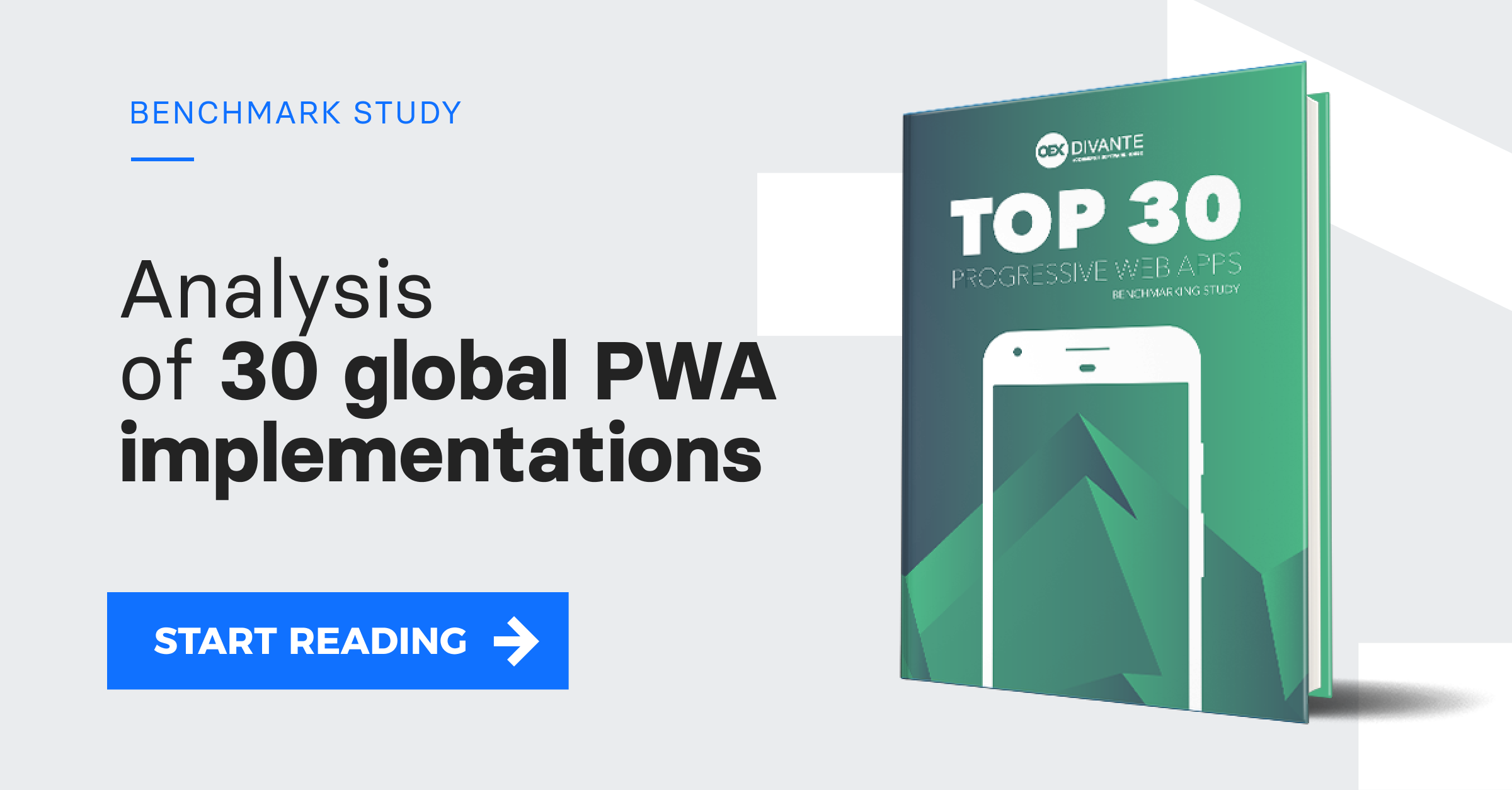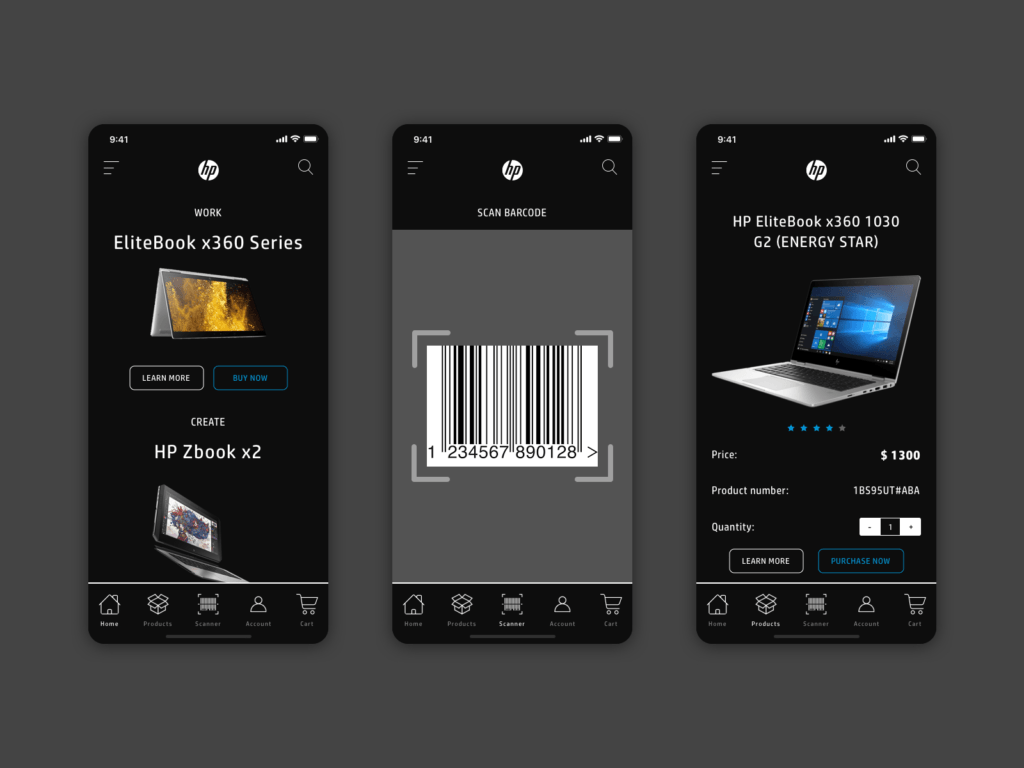I’ve been observing that Progressive Web App technology has been mentioned in 99% of cases in relation to B2C selling and most of those cases were fashion retail, with only a few fragments about usage in a B2B context. And… I’m not surprised. Fancy sneakers look way better on prototypes than wire ropes or drills.
Hyped topics require a spectacular entourage and that’s a dream situation for guys like me, grounded in a B2B environment. I work mainly with producers and big distributors who treat technology deadly seriously, but in most cases, I’m the first person who presents Progressive Web Apps as a solution for them. Brilliant! I don’t need to explain how many benefits being the first provides in terms of commercial teaching (look at “Challenger Sale”). Before we get to that though, they take this new trend as a solution for a better experience that is more a gadget targeting teenagers and is “too cool” for selling screws or other construction materials. Brilliant x2!
In my opinion, PWA technology is even more attractive for B2B than B2C, because of a few reasons, which I would like to share with you below.
PWA in brief
In the beginning, a few words of introduction about what Progressive Web Apps are.
The foggy establishment notion of non-technical CEOs as “this function of having a web shop offline” is not so far away from the truth. A PWA is an independent frontend layer, built using the mobile-first approach, which is integrated with another eCommerce or CMS platform. Displayed in your browser on any device you need, but using just a phone, downloadable similarly to native apps, and some range of functionalities work offline. Long story short, it should eventually, replace the native mobile apps that we know today.
More about Progressive Web Apps in our beginners’ guide.
5 reasons B2B should use PWA
Now we are moving to the key – why it’s more suited to B2B than B2C. There are surprisingly many more reasons than we expect:
1. Working offline better for returning clients – and here is one of the most crucial moments of the tale about shops that work without an internet connection. In most cases, to have access to products offline, you need to previously see a certain category to cache them and have full access offline. In B2C, especially rotating industries like fashion, you face one-time buyers, who might one time be looking for trousers and another time shirts, glasses, etc., which means that they need the internet, at least at the beginning of reviewing and entering a certain category. It’s not a big deal in the XXI century, but still – it makes offline access conditional.In the case of B2B, the situation is slightly different. B2B buyers order, in most cases, the same products or at least products from the same categories. That means the offline experience is much closer to expectations.
2. Offline payments – in the case of B2C, payments require access to the internet. Period. All you can do is finish the purchase path, and make a payment after reconnection. Push notifications will help you not to forget. Sounds decent, but I can imagine some conversion decrease at this stage.When it comes to B2B, payment is based on trade credit and subsequent invoices. All the mechanisms required to process an order in ERP are done without further actions. No risks in terms of conversion.
3. Offline access has a bigger usage – I can imagine much more easily making a B2B order on a construction field outside of the city, with poor access to the internet, than buying shoes on the way from the tram to the metro where the connection is obviously limited. There is a possibility that required products in the first-mentioned case will have to be ordered in the same place anyway, because of worked out conditions. If it’s impossible via a given platform, it will have to be done by a call. Sounds ok, but believe me – companies that have already spent hundreds of thousands on a platform don’t want to take a step backward and maintain an army in a call center. Again.
4. Special Functionalities – a barcode Scanner is one of the top 3 functionalities that B2B companies are asking me about. That feature used to require scanner hardware and desktop functionality or a mobile app. With a PWA you have handy access to the scanner, without ridiculous costs related to native app implementation and further maintenance. That’s just one example, but definitely, we could find more.
Barcode scanner concept for HP (Source)
5. PWA vs. Native App – here we come to the universal truth applicable to both B2C and B2B mobile sales. We compared PWAs vs Native Apps some time ago, but here’s what’s crucial for B2B:Native apps need to be implemented from scratch and cover only one channel – mobile. With a PWA, we are able, for a comparable budget, to deliver a solution for desktop AND mobile. You have desktop/RWD anyway, so why generate additional costs? Implementation is one thing, but maintenance and development of a native app can be a pain in the ass. Why? fewer and fewer talented developers want to stay on iOS and Android development. All statistics show falling interest in services of that kind. Lower demand constantly forces mobile software houses to pivot into PWA or other solutions, also re-orienting their own employees to JavaScript frameworks. It means that if you finally find somebody to maintain your app, hourly rates will dramatically increase from year to year.
What is more, you will need to meet providers’ expectations, like a higher and higher minimum of hourly rates booked per month. If you have a simple app, there will be no work for one or two guys full-time and development will be pointless.
***
That definitely proves a PWA is not just a shiny, new toy in terms of Business to Business platforms. Five is a good number, so I will finish my enumeration here. If you need more, just drop me an email.
Published April 23, 2019













